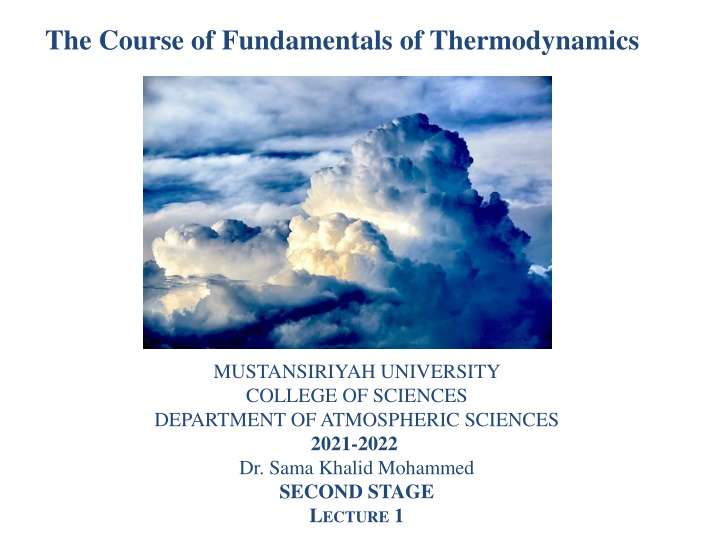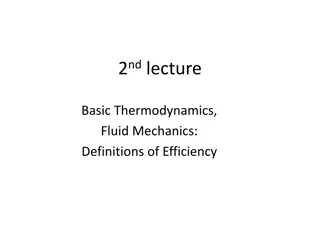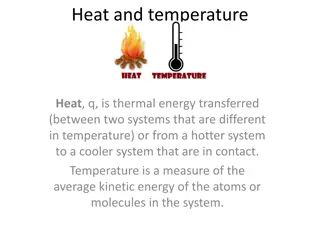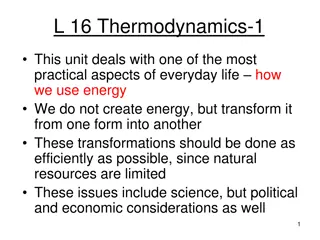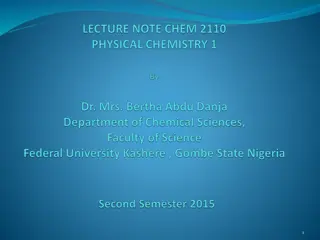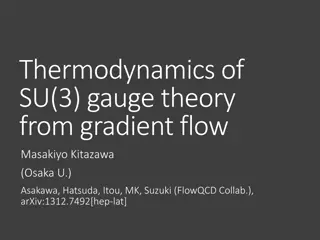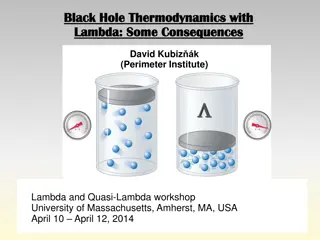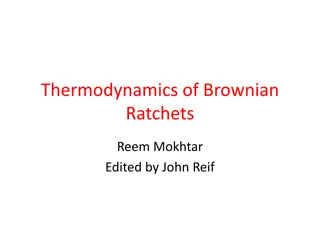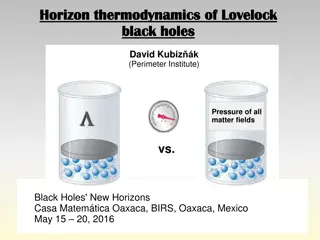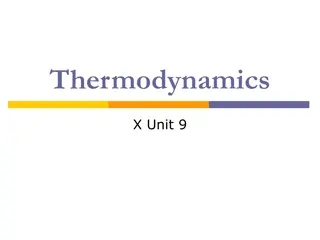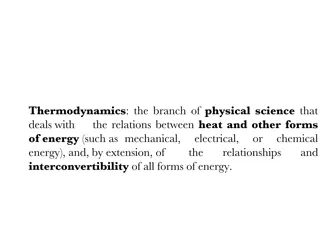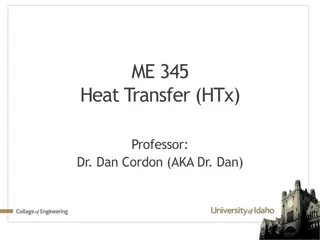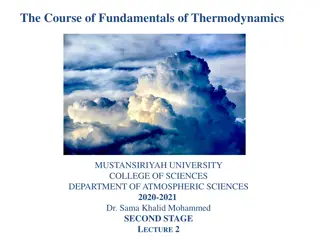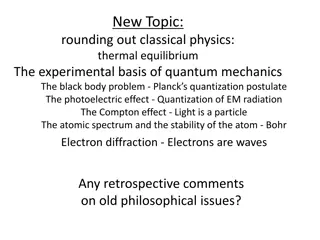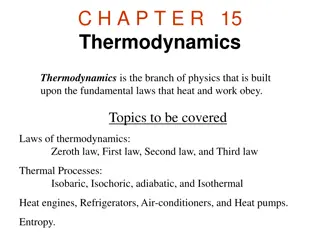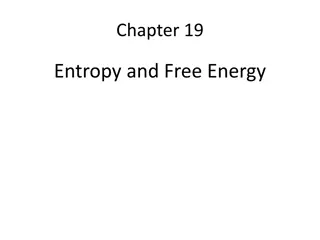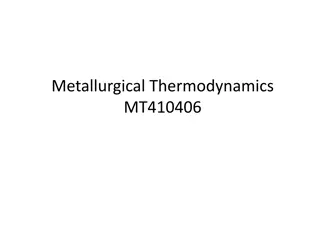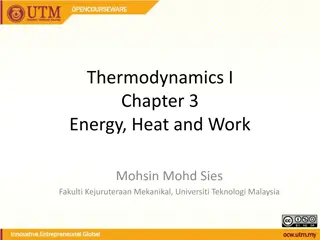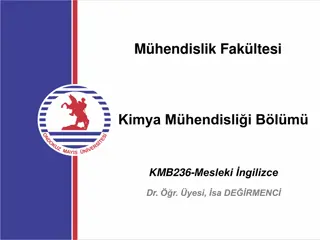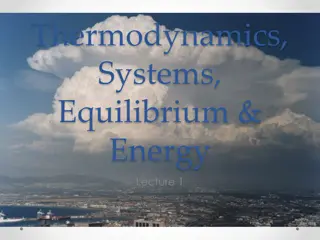Exploring Fundamentals of Thermodynamics at Mustansiriyah University
Delve into the study of thermodynamics, a cornerstone in classical physics with wide applications across various disciplines. Learn about systems, energy transformations, and the importance of understanding the transfer of energy in atmospheric phenomena. Discover key concepts, definitions, and types of thermodynamic systems to enhance your knowledge in this exciting field.
Download Presentation

Please find below an Image/Link to download the presentation.
The content on the website is provided AS IS for your information and personal use only. It may not be sold, licensed, or shared on other websites without obtaining consent from the author.If you encounter any issues during the download, it is possible that the publisher has removed the file from their server.
You are allowed to download the files provided on this website for personal or commercial use, subject to the condition that they are used lawfully. All files are the property of their respective owners.
The content on the website is provided AS IS for your information and personal use only. It may not be sold, licensed, or shared on other websites without obtaining consent from the author.
E N D
Presentation Transcript
The Course of Fundamentals of Thermodynamics MUSTANSIRIYAH UNIVERSITY COLLEGE OF SCIENCES DEPARTMENT OF ATMOSPHERIC SCIENCES 2021-2022 Dr. Sama Khalid Mohammed SECOND STAGE LECTURE 1
Welcome Students In The Welcome Students In The New Course New Course And In The And In The First Lecture First Lecture
This lecture includes the following items Definitions Systems, equilibrium types of energy state variables
Why We Should Study Thermo-Dynamics TD ? The theory of thermodynamics or TD is one of the cornerstones of classical physics. It has applications in Physics, Chemistry, Earth Sciences, Biology and Economics. TD plays an important role in our quantitative understanding atmospheric phenomena ranging from the smallest cloud microphysical processes to the general circulation of the atmosphere. TD deals with the transfer of energy from one place to another and from one form to another. of
Thermodynamics The key concept is that heat is a form of energy corresponding to a definite amount of mechanical work. Thermodynamics is the study of equilibrium states of a system which has been subjected to some energy transformation, or the study of energy, energy transformations and its relation to matter (transformations of heat into mechanical work and of mechanical work into heat).
Some Definitions Thermodynamic system: a quantity of fixed mass under investigation (matter and or energy). Examples of systems are (A parcel of air , A glass of water , An ice cube, The entire atmosphere , The entire Earth and atmosphere , The Universe ) Surroundings: everything external to the system, System boundary: interface separating system and surroundings, and Universe: combination of system and surroundings. We allow two important interactions between the system and its surroundings: heat can cross into the system (our potato can get hot), and work can cross out of the system (our potato can expand).
The Types of a SYSTEM A system is called open (control volume) when it exchanges matter and energy with its surroundings. In the atmosphere all systems are more or less open. Examples of open systems are: A glass of water with no lid, allowing evaporation into the air above it. An internal combustion engine, since it gains matter through the intake valves and loses matter through the exhaust manifold. In an open system mass and energy can be exchanged with its environment.
The Types of a SYSTEM A closed system is a system that does not exchange surroundings. In this case, the system is always composed of the same point masses (a point-mass refers to a very small object, for example a molecule). Examples would be: A glass of water with a lid. A sealed soda can. The inside of a ThermosTM bottle with the top screwed on. The entire Universe (as far as we know). matter with its A system is defined as closed when it exchanges energy but not matter environment, and as isolated if it exchanges neither mass nor energy. with its
The Types of a SYSTEM in atmospheric thermodynamics, we assume that most systems are closed, when the interactions associated with open systems can be neglected. This is approximately true in the following cases. (a) The system is large enough to ignore mixing with its surroundings at the boundaries, ex., a large cumulonimbus cloud may be considered as a closed system but a small cumulus may not. (b) The system is part of a larger homogeneous system. In this case mixing does not significantly change its composition. A system is called isolated when it exchanges neither matter nor energy with its surroundings. Examples would be: The inside of a Thermos bottle with the top screwed on (assuming it was perfectly insulated). The entire Universe (as far as we know).
Some Notes The set of all open systems does not intersect the set of all closed systems. Every system is either open or it is closed. The set of all isolated systems is a subset of the set of all closed systems. Any isolated system is also a closed system, but a closed system is not necessarily an isolated system. An open system cannot be an isolated system. Any matter or energy that is not part of the system is considered to be part of the surroundings or environment.
Riddles What is the Matter? In a closed system, is there an energy exchange? To a thermodynamic system two things may be added/removed: energy (in the form of heat &/or work) andmatter, What are the type of a system in the following examples(open, closed or isolated)? a. an open cup to which we can add water. b. cool a closed water bottle in fridge. c. A closed vacuum thermos flask.
Energy When a system has been chosen, the next step is to describe it in terms of quantities related to the behavior of the system or its interactions with the surrounding or both. In thermodynamics, we deal with change of the total energy only which has two groups: macroscopic and microscopic. Microscopic approach ( also called statistical thermodynamics) considers the behavior of every molecule by using statistical methods, it is related to molecular structure of a system, and it is independent of outside reference frames.
Energy Macroscopic approach : a system posses as a whole with respect to some outside reference frame, such as kinetic and potential energy. It is related to motion and the influence of some external effects such as gravity, magnetism, electricity, and surface tension. Here we are concerned with the average effects of many molecules' infractions. This approach greatly reduces the complexity of the problem and we use this approach in this course. This is known as "Classical Thermodynamics".
Energy The total energy of a system consists of the kinetic, potential, and internal energies: where the contributions of magnetic, electric, nuclear energy are neglected. Internal energy is related to the molecular structure and the degree of molecular activity and it may be viewed as the sum of the kinetic and potential energies of molecules. Potential energy: is the energy that a system posses as a result of its elevation in a gravitational field, PE
Energy The sum of translational, vibrational, and rotational energies of molecules is the kinetic energy of molecules, and it is also called the sensible energy. At higher temperatures, system will have higher sensible energy. Internal energy associated with the phase of a system is called latent heat. The intermolecular forces are strongest in solids and weakest in gases. Internal energy associated with the atomic bonds in a molecule is called chemical or bond energy. The tremendous amount of energy associated with the bonds within the nucleolus of atom itself is called atomic energy. Energy interactions with a closed system can occur via heat transfer and work.
Homogeneous and heterogeneous thermodynamic systems A homogeneous system is defined as the one whose chemical composition and physical properties are the same in all parts of the system, or change continuously from one point to another. Example (a column of atmospheric air, which is a mixture of a number of gases, mainly nitrogen and oxygen, acted upon by the force of gravity, both the composition of the system and its physical properties will continuously change from one point to another. A heterogeneous system is defined as one consisting of two or more homogeneous bodies. The homogeneous bodies of a heterogeneous system are referred to as phases ( i.e. The system that has more than one phase). An example of a heterogeneous system is water with ice floating in it. This system has two homogeneous bodies, water and ice. The chemical composition of the two phases is the same, but their physical properties differ drastically.
Phase, State and State variables Phase: a quantity of matter that is homogeneous throughout, and Phase Boundaries: interfaces between different phases (an example of a single phase is ice. Another single phase is liquid water; a glass of ice water is a two-phase mixture with the phase boundaries at the edge of each ice cube). State: condition described by observable macroscopic properties (state variable). state variable: is a property of a system that depends only on the current, equilibrium state of the system and thus do not depend on the path by which the system arrived at its present state(independent of the history of the system), for example, internal energy, enthalpy, and entropy etc.
How to specify the state of a system thermodynamically? The thermodynamic state of a system is defined by specifying values of a set of state variables. For fluid systems, typical properties are pressure, volume and temperature. More complex systems may require the specification of more unusual properties ( ex. the state of an electric battery requires the specification of the amount of electric charge it contains). Since p, V, and T determine the state of the system, they must be connected by functional relationship f (p, V, T) = 0 which is called the equation of state. Any other thermodynamic variables that depend on the state defined by the two independent state variables are called state functions. State functions are thus dependent variables and state variables are independent variables.
